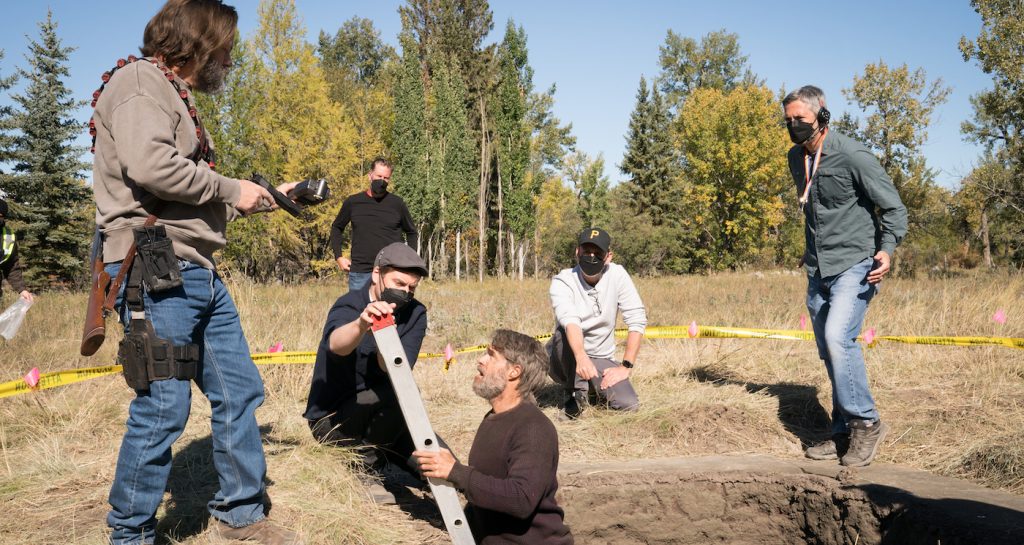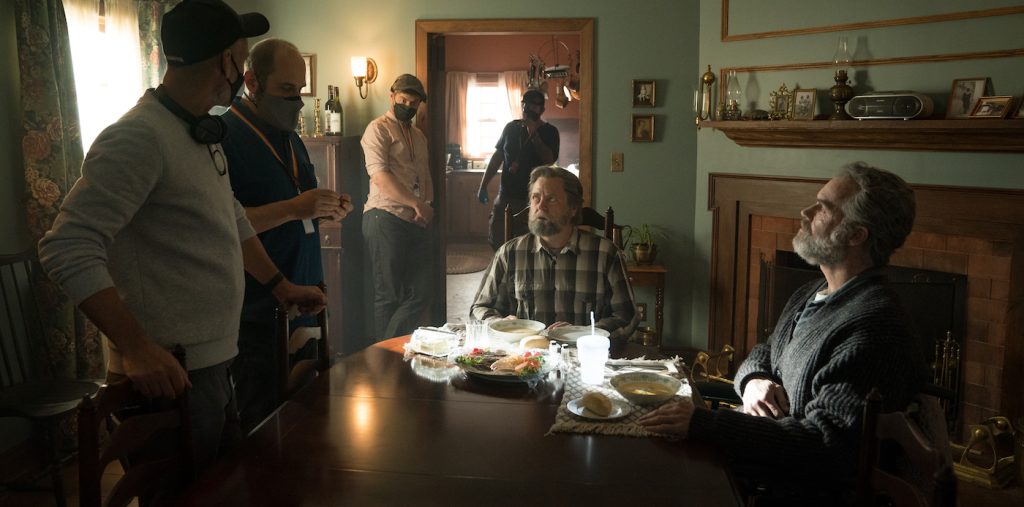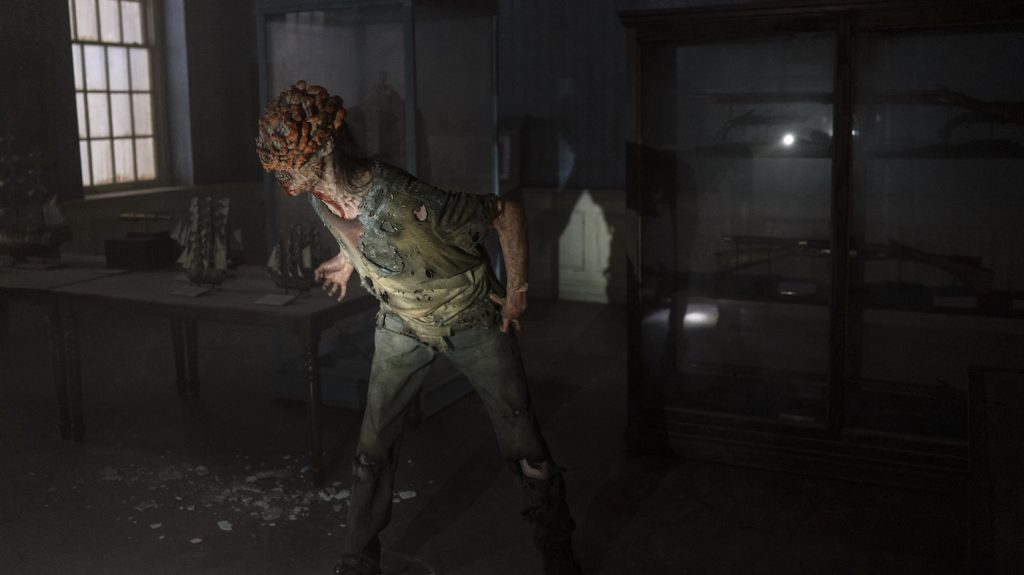“The Last of Us” Cinematographer Eben Bolter on Episode 4 & More
It took a decade to get there, but The Last of Us’ migration from video game to television paid off big time last month when the post-apocalyptic thriller enjoyed the largest viewership jump in HBO history. Audience numbers increased 22 percent to 5.7 million viewers for the show’s second episode in the wake of its January 15 debut. Already renewed for a second season, the series comes from Emmy-winning writer-producer Craig Mazin of Chernobyl fame in collaboration with Neil Druckmann, who served as creative director for the original 2013 Naughty Dog game.
Cinematographer Eben Bolter, a longtime fan of the game, moved with his family to Alberta, Canada for a year to be part of the Last of Us team. “There’s a lot of things The Last of Us is not,” says Bolter, whose credits include the 2017 sci-fi thriller iBoy and HBO’s recent The Girl Before miniseries. “It’s not a cliché zombie movie, it’s not Hollywood backlit where everyone’s close-up is perfect. It’s a world of organic cinematic naturalism, and that’s something I could just feel.”

Following Chernobyl: Abyss cinematographer Ksenia Sereda’s first two installments, Bolter shot episodes three, four, five, and six of The Last of Us, which tracks 14-year-old Ellie (Bella Ramsey, from Game of Thrones) and Joel (Pedro Pascal of The Mandalorian) as they journey through post-apocalyptic America searching for the cure to a parasitic fungal infection that has transformed most of the human population into monsters.
Speaking from his home in England, Bolter talks to The Credits about the beauty of handheld cinematography, the secret to “skip lighting” and the perfectly imperfect messiness that imbues The Last of Us aesthetic.
How did you get the gig?
I hunted this job down. I really went after it because I loved The Last of Us video game from the day it came out. I remember thinking “If this ever gets adapted, I’d be incredibly interested in shooting it.” Then I saw Craig Mazin’s Chernobyl — a masterpiece. When the two came together, the day of the announcement, I told my agent “This is my dream job,” and she pulled off the impossible.
Your first episode “Long Long Time,” which aired Sunday [Jan. 28], focuses on survivalist Bill (Nick Offerman), and Frank (Murray Bartlett), a refugee from the Infected. Their relationship unfolds in a suburban environment different from what’s come before. How did you approach the vibe for this relatively domestic situation?
It’s a love story and I can’t put enough praise on the script. It had so much detail, so much subtext. When Peter Hoar, the director came on board, we tried to deeply understand the orientation of every scene and talked about how to tell the story so it still feels like it’s in The Last of Us world. We’re covering 20 years in 45 minutes. Do we change lenses? Do we change the camera? Do we make it black and white? Do we not use any more handheld? In the end, we decided to keep things simple and grounded and real.

One extended sequence begins in the dining room, then moves to the living room, and culminates in this emotional moment at the piano. How did you shape the visuals for that scene?
It starts with the dinner table. The way Nick sets the plate down, the bottle, who sits where and why — we wanted to mirror all that stuff later. And I wanted the scene to have a beauty to it without feeling too lit so I used this skip lighting technique.

What’s skip lighting?
That’s where the sun comes in through the window and hits the tablecloth so you’re getting this ambiance by using props and the set rather than film lights. [Road to Perdition and American Beauty DP] Conrad Hall is one of my favorite cinematographers and he did loads of lighting where it never quite hits the actor’s face directly but bounces off the environment. I call it skip lighting because it’s like skipping a stone off the water.

It’s both touching and unexpected when Bill sits down at the piano and sings for Frank.
Craig [Mazin] wanted to record that as a live performance so we decided to cross-shoot, which we don’t normally do. I had one camera in the middle with the ability to rove for two-shots. Then I had one camera for Nick and another camera for Murray and they weren’t to ever lose their man. That allowed us to play through the scene as one take. It was very moving. A lot of the people in the room cried. It was quite a magical thing to shoot.
The Last of Us takes place in a post-technology America whose electric power grid has largely collapsed. How does that situation affect your approach to realistic lighting?
I love constraints. Here, you’ve got daylight, you’ve got moonlight, you’ve got fire — three natural resources — and then a finite resource with electricity in certain areas that have generators or the lights are 20 years old so they’re going to be flickering. And you’ve got torches and flashlights. I wanted to lean into these imperfections and make the light feel dirty and mixed and messy and feral.

Episode 4 opens with Ellie checking out a handgun in a dark space illuminated by a shaft of sunlight. It looked gritty and beautiful at the same time. How did you put that visual together?
Ellie’s in the bathroom of a gas station in the middle of nowhere. We need to see Ellie so instead of a window, we decided “Let’s put a hole in the ceiling and have little bits of dust coming through and let’s get the sun in a position where it illuminates her without being too perfect.” We didn’t want it to look like Michael Bay. Nothing against Michael Bay but with The Last of Us, you always want to dirty it up.
Nature plays a powerful role in this story. For example, Episode 3 begins with Joel and Ellie in this gorgeous forest “10 miles west of Boston,” although there’s a huge mountain in the background. Where was that filmed?
We shot that in Banff near Calgary in the Rocky Mountains. We talked about that mountain — are we going to delete the mountain to make it more Massachusetts or let it slide? I guess they let it slide. This scene was actually my first day on the show. Joel’s down by this stream taking a quiet moment to say goodbye to Tess [his dead companion played by Anna Torv]. We wanted to capture that early morning feeling when the sun’s just about to come up. It’s kind of that blue hour with a little bit of purple in the air. Then Joel meets Ellie after the sun’s come up and we’re in the woods. I had some big lights set in place to where the sun should be so that if we ever got a big cloud, we could fire up one of the lights and take over from the sun. On a show like this when you’ve got 250 people in Banff trying to shoot a scene, you can’t just say “We’re going to wait three hours until the clouds move.” You build in this professional protection, but you try not to use it.
Nearly everything looks like it’s shot with handheld cameras. Why do you favor that technique for The Last of Us?
[Cinematographer] Ksenia [Sereda] set that up in Episode One, which I think was 100 percent handheld. It was a good decision because handheld gives things a documentary-style grounding. When you suddenly put a camera on a stick, it feels like a bit more artifice so we generally defaulted to handheld unless there was a good reason to do something differently. And we used this thing call a ZeeGee, which I loved. It sits on a Steadicam arm, takes away the bounce from the shoulder and allows Neil Bryant, our A cam operator, to operate without any of the weight.
What did you use for camera gear?
Ksenia shot Episode One on the Alexa mini with Cooke S 4 lenses and it’s a smart choice that I didn’t feel any need to change. It’s lightweight, small, good for handheld and, in my opinion, the Alexa has the best dynamic range to emulate a 35-mil film look. Unlike the shallow focus you get from large format or 65 mil, which is the fashion right now, the Alexa captures a large amount of detail in the background, so you’re not just getting out-of-focus blobs.
The action sequences deal with survivors fighting the Infected, which most people would call zombies. How did you deal with those battle scenes?
We weren’t allowed to say the Z word on set. It was like a banned word. They were the Infected. We weren’t a zombie show. Of course, there’s tension building and jump scares but the show’s really about our characters; The Infected are an obstacle they have to deal with. For example in Episode Three, Ellie hears an Infected trapped under some rubble. Initially, she’s scared, but then you see her grow in confidence, cutting open the Infected and looking at the fibers. Through that interest, you see what the Infected means in Ellie’s own life. She was born into this world that’s completely gone to hell because of this thing and now, maybe she has inside her a solution to this thing. We see Bella’s performance as she goes from wonder to hate and you start to think, wow what is this girl capable of? There’s darkness and anger in there. So [even in scenes featuring the Infected], it’s character first and then just tell the story.

As a guy who played The Last of Us game when it first came out, you must be gratified to see gamers and non-gamers alike responding so well to this televised adaptation.
Back in 2013, I remember telling everybody I saw “You have to try this game” but there were many people I knew who were never going to pick up a controller. It’s almost like “There’s this amazing book I read but you can’t read the language it’s written in so you’re never gonna know.” What’s been great about this series is that now, I don’t have to pitch people anymore: “Trust me, it’s not just zombies.” My parents, for example, I can just tell them: “Watch the show.” And now they see what I saw when I first played the game, which is a beautiful thing.
For more on The Last Of Us, check out these stories:
How “The Last Of Us” Episode 3 Departed From The Game in a Beautiful, Heartbreaking Way
HBO’s “The Last Of Us” Delivers Astonishing Second Ep For Largest-Ever Viewership Growth
HBO’s “The Last Of Us” Has Massive Debut



